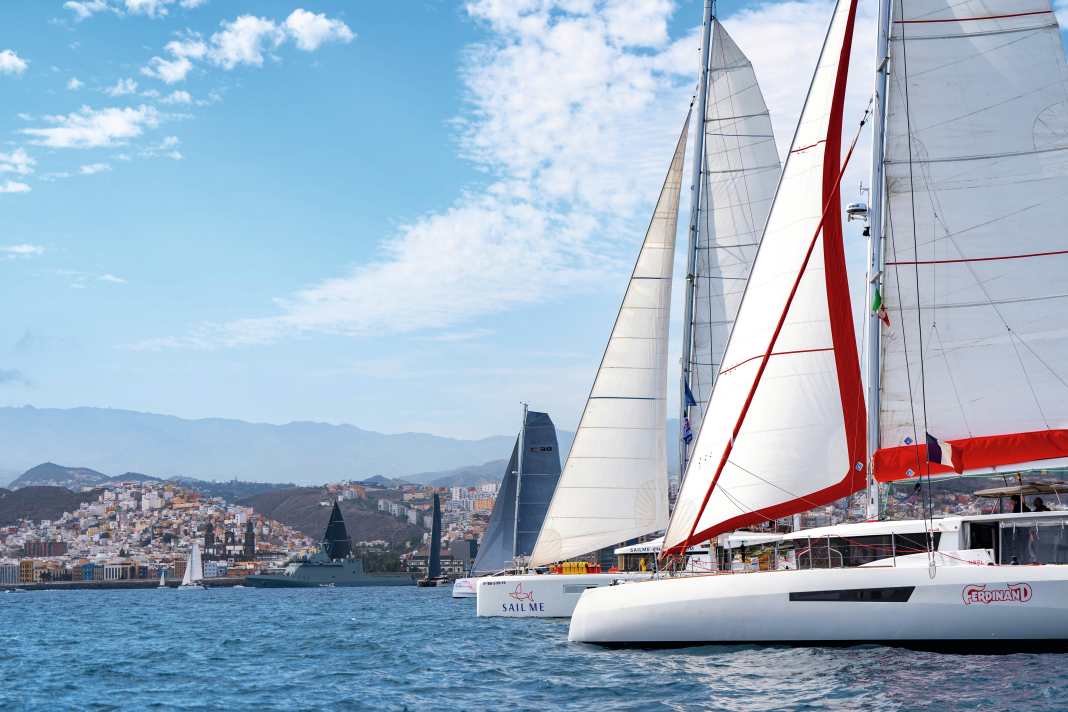



A transatlantic crossing is simply part of the sailing life, isn't it? Many people do. Keyword bucket list. It's the ultimate adventure, with 2,500 to 3,000 nautical miles to cover depending on the route, non-stop, with no land nearby. Only wind, waves and the waking rhythm determine the on-board routine and daily routine.
No distractions from smartphones, the internet or stress on land. How do you cope with the constant movement of the ship? What do the great distances and the vast ocean do to your thoughts? It's a real experiment that you only know if it works afterwards. A real adventure.
But not everyone has their own boat to sail to the Caribbean, or knows owners who will take you with them. But there are alternatives.
Hand against bunk
The cheapest option is, of course, to look for a place hand against berth. This is certainly possible, for example via the crew exchanges of transatlantic regattas such as the ARC (Atlantic Rally for Cruisers), ARC+ or classified adverts on the Internet. There are definitely owners, often married couples, who take crew on board for the long haul because they have not found enough fellow sailors in their private circle. The watch system always lasts 24 hours. You can't assume that the autopilot will do all the steering work - and it can fail too.
Of course, the westbound Atlantic route is not the only option; there is a similarly wide range of return journeys via the Azores in spring. However, this is the longer and, due to the often harsher weather there, more challenging option. On the other hand, prices are often lower on this route.
Worldcruising refers to the crew exchange on its event websites oceancrewlink.comother popular pages are handgegenkoje.de or Facebook groups such as hand against berth. Of course, such offers may be a leap in the dark, but they are often the cheapest way to cross the pond, as some owners take on fellow sailors in return for a share of the on-board cash or keep them completely free.
If you try this route, you should endeavour to make contact as early as possible before the appointment to get an impression of the owner and the boat. The more detailed and earlier the dialogue, the better. It also takes a bit of intuition and luck to find a ship and owner that roughly match what you are looking for.
Chartered berth
A chartered berth for a transatlantic trip is easier to plan. There are various professional berth providers who set sail with larger, well-equipped standard yachts, such as Schoenicke-Skipperteam or Segelreisen Hering. Sailing on the classic "Peter von Seestermühe", which has been sailing to the Caribbean and back every year for many years, is also long established on the market. Depending on the route and whether they start as part of the ARC or not, such offers are around 4,000 euros - for a berth; single cabins usually cost around 80 per cent more. But don't forget: The berth is not always occupied when the watches change. It's best to ask the organiser!
Each crew member is fully integrated and takes on all the tasks on board, from sailing manoeuvres and steering to galley duty. A real sailing experience, probably the closest you'll get to crossing with your own boat. The skippers are all experienced, most of them have already completed several crossings, know what is important and how to solve problems with the sometimes motley crews. Speaking of which: it's definitely worth asking what the crew looks like to get an idea of age, gender mix and the like.
All-inclusive berth
The completely carefree version of crossing the Atlantic is a charter on one of the larger, luxurious ships, such as the boats from Sailing-Classics, which specialises in retro classics (sailing-classics.com)who operates chic staysail ketches such as "Rhea" and "Chronos".
Sea Cloud Cruises belongs to the top segment (seacloud.com)who set sail on modern, luxurious new-build versions of the classic square-rigged ships. They make the leap across the Atlantic at the beginning and end of the Caribbean charter season, on the outward journey on the classic route, back via the Azores. Compared to standard yachts, comfortable cabins are rented there, while a professional crew including service and other staff look after the ship and guests. It is usually possible to steer the yacht yourself, take to the sails or help with manoeuvres.
But of course you are not really involved in the nautical side of things, as is the case with the smaller yachts. On the other hand, the movements of the ships, which are often 50 metres or more long, are much smoother and guests are pampered in a high-class ambience and with lavish menus. There is also a fitness room, lounges and an in-house library. All of this in a dignified, classic look. Of course, this comes at a price: the costs for the simplest berths start at around 8,000 euros, with an entire cabin, up to the size of a hotel suite, quickly reaching five figures.
As far as planning is concerned, the tall ships have fixed schedules. If the trade winds are delayed, the aeroplane has to take over. But the return flight can also be booked precisely.
More about Sea Cloud:
For more individualised passages, for example in the ARC, such phases must be sat out - and a time buffer factored in.
Either way, you should start planning early. Such a trip appeals to many sailors, and the number of places is naturally quickly booked up due to only two crossings per year.

